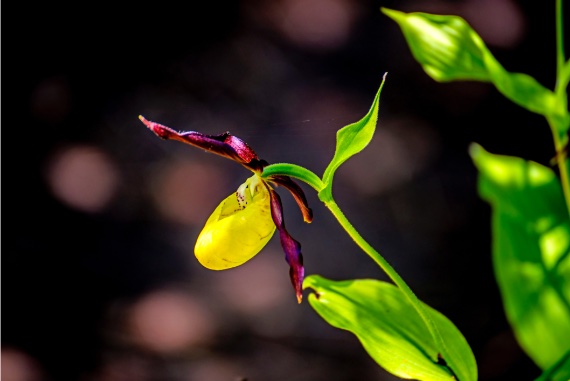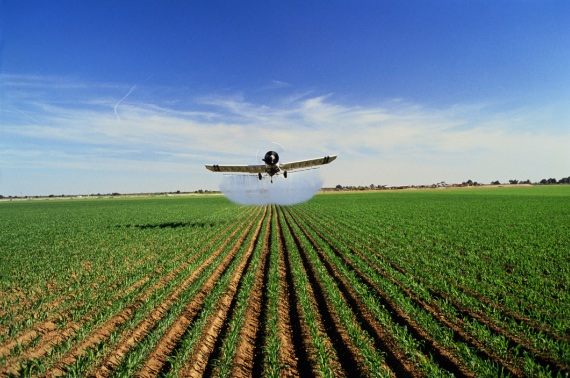In the heart of Central Asia, in a cold and rugged land full of steppes and peaks that touch the sky, lives a legendary animal, “the ghost of the mountains.” The snow leopard is one of the most beautiful felines, elusive to humans and so stealthy that it cannot roar. For a long time it was thought to have disappeared from this corner of the globe. But in April 2020, in the midst of the global lockdown during the COVID-19 pandemic, Russian biologist Aleksey Kuzhlekov came across a female snow leopard while exploring Sailugem National Park in southern Russia. After years without seeing a trace of the animal, the encounter lasted just 30 seconds, enough time to snap a photograph. “Let people see that she is alive and that we are protecting her,” said Kuzhlekov, a privileged witness of that fortuitous and exciting encounter.
Protecting the most endangered species, such as the snow leopard, is one of the goals of the recently approved 30×30 biodiversity agreement. This apex predator is included on the International Union for Conservation of Nature (IUCN) Red List of Threatened Species. Its population has declined by 20% over the last two decades, and it is estimated that only about 7,500 individuals remain in the wild. Poaching, habitat loss and climate change have pushed the species into a critical situation. To help the species survive, the IUCN, together with authorities from the 12 countries where this animal lives—including China, Pakistan, India, Russia and Nepal—and various environmental organisations, have promoted a programme to save it from disappearing forever.
Promoting biodiversity to prevent extinction
According to the latest Global Assessment Report on Biodiversity and Ecosystem Services by the Intergovernmental Science-Policy Platform on Biodiversity and Ecosystem Services (IPBES), more than a million species of animals—such as the snow leopard—and plants are threatened with extinction within a few decades. To put this in perspective, many scientists believe the planet is going through its sixth mass extinction, the greatest loss of life since the time of the dinosaurs. There are currently more than 42,100 species on the IUCN Red List of Threatened Species. These include the polar bear, chimpanzee, Cantabrian capercaillie, mountain gorilla, elephant, whale shark, rhinoceros and freshwater dolphin—some of the world’s most endangered animals.
But there is hope that this situation can be reversed. Scientists and institutions around the world have long been promoting various initiatives to defend the planet’s biodiversity, with concrete measures that should have a positive impact in the short and medium term. This was recently the case at the UN Biodiversity Conference (COP15), which took place in Montreal, Canada, at the end of 2022.
At the summit, some 190 governments reached a historic agreement to take a series of concrete actions to promote the planet’s biodiversity. This global pact, known as 30×30, is a set of 23 actions designed to reduce biodiversity loss and restore natural ecosystems by 2030.
Restoring degraded ecosystems
Specifically, the countries signing the pact, officially called the Kunming-Montreal Global Biodiversity Framework, commit that by 2030, “at least 30% of terrestrial, inland water, and of coastal and marine areas” will be “effectively conserved and managed through ecologically representative, well-connected and equitably governed systems of protected areas”. According to the UN, about 17% of the land area and 8% of the marine areas are currently protected. The pact also stipulates that by 2030, “at least 30% of areas of degraded terrestrial, inland water, and coastal and marine ecosystems” should be “under effective restoration.”

Lluís Brotons, a biologist and researcher at the Centre for Ecological Research and Forestry Applications (CREAF) near Barcelona, Spain, sees the agreement as “a step in the right direction” because “if we fail to conserve biodiversity and the natural processes that sustain it, the future of humanity itself is at risk.”
Financing is another important step forward in the pact, which commits to mobilising at least $200 billion a year from public and private sources to implement biodiversity-related plans and strategies. Developed countries also pledge to increase “international financial flows” to developing countries—many of which have high levels of biodiversity and enormous difficulties in adopting measures to protect their flora and fauna—to $20 billion a year by 2025. This will rise to $30 billion by 2030.
Reduce pesticides and curb invasive species
The text agreed in Montreal includes other ambitious targets, such as avoiding at all costs the loss of areas of critical importance for biodiversity, including ecologically intact ecosystems, as well as halving global food waste. It also calls for reducing by half both the excess nutrients in our ecosystems and the overall risk posed by pesticides and other chemicals that are highly toxic to nature. It also calls for action to prevent the introduction of exotic species that can become invasive and pose a serious threat to the maintenance of certain ecosystems. In the same vein, the pact calls on countries to phase out or reform biodiversity-damaging subsidies by at least $500 billion (463 billion euros) a year by 2030.

This global agreement is inspired by the Global Deal for Nature, which was launched in 2019. In an article published in the journal Science Advances, a team of experts warned at the time that it was essential to go further and adopt new measures to conserve nature and combat climate change. To this end, they drew up a science-based crash plan to protect the world’s diversity by 2030. “The overarching purpose: to tackle dangerous climate change or climate breakdown and safeguard biodiversity in order to avoid any worsening of the sixth mass extinction that we have found ourselves in. So the approach that we’re taking really addresses both at once,” explained one of the text’s authors, Eric Dinerstein, in Newsweek magazine. To achieve this, the priority was to fully protect 30% of the planet, including its land, rivers, lakes, seas and oceans. That revealing article laid the groundwork for the recently approved 30×30 project, which has just been launched. Its success would show that all is not lost.
Comments on this publication